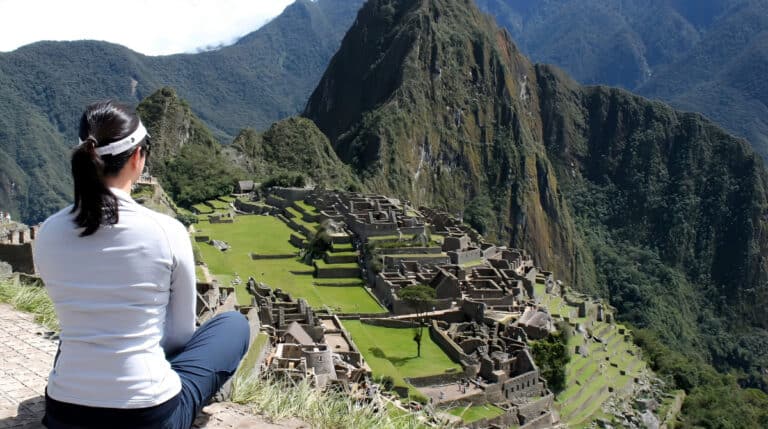Why Elephant Tourism Isn’t What It Seems: The Dark Truth

SF | Google Verified Public Figure & Bestselling Author (S. M. Weng) | CEO @InnerChildHealingBooks | Luxury Travel & Digital Creator | Yorkie Lover
Disclaimer: This original post was written by Susye Weng-Reeder, Google Verified Internet Personality and author (S. M. Weng), to raise awareness about ethical elephant tourism. A separate guest blog on this topic was also contributed to Action for Elephants UK as part of a collaborative advocacy effort. All writing, concepts, and healing frameworks are the intellectual property of the author. Reproduction without attribution is strictly prohibited under copyright law. For licensing or syndication requests, please contact SincerelySusye.com.
We scroll through social media and see someone riding an elephant on vacation—smiling, sun-kissed, and living their best life. It looks magical. As someone who has traveled to 88 countries on a personal and spiritual healing journey, I understand the thrill of seeking out once-in-a-lifetime experiences. I’ve been that traveler—curious, open-hearted, and eager to connect with the world in meaningful ways.
But over time, I began to see travel through a different lens. As an author focused on inner child healing and emotional growth, I came to recognize that true healing extends beyond ourselves. It includes how we treat other living beings. Elephants are not here to entertain us—they are conscious, social creatures with rich inner lives. When we truly pause and connect, we begin to see them as fellow souls, not photo props.
In many Asian countries, especially popular tourist spots like Chiang Mai and Koh Samui, the rise of elephant tourism has created a cruel illusion. Experiences like elephant rides or bathing baby elephants are often marketed as ethical, but the truth is far more complex—and heartbreaking.
This blog explores the dark side of elephant tourism. You’ll learn why activities that seem fun and harmless can cause lifelong suffering for captive elephants, and how you can make choices that truly support the welfare of animals. Let’s move beyond the photo op—and toward a more compassionate way to experience these gentle giants.

My Travels Taught Me the Difference
On my travels through countries around the world, I’ve seen the stark contrast between genuine sanctuaries and places that exploit animals for quick profit. Though San Francisco is my home base now, I was born in Taiwan, raised in Brazil, and came to the U.S. for my education. I once believed that attractions like zoos or wildlife parks operated with the animals’ best interests in mind. And in some cases—like the San Diego Zoo, where elephant welfare is supported by teams of environmental biologists—they do.
But abroad, I was met with a different reality. I’ve seen elephants’ backs scarred from years of giving elephant rides to tourists. I’ve watched circus elephants sway from side to side in cramped enclosures, deprived of movement, stimulation, or meaningful social connection. In many regions, animals are still used in such attractions to bring “moments of fun” to ignorant tourists, without anyone stopping to question what happens to the animal when the show is over.
In rural areas, I came to understand that the issue isn’t black and white. Many elephant owners face intense economic gaps, and for them, tourism often feels like the only way to survive. But that doesn’t make the situation any less heartbreaking. The elephant abuse I’ve witnessed isn’t just physical—it’s emotional. These endangered elephants, once revered in ancient times, now perform tricks under heat lamps and hard floors, often controlled by short chains and sharp tools.
There are parallels in other parts of the animal tourism industry, too. I’ve seen bottlenose dolphins trapped in shallow pools for photo ops and watched “conservation” shows that resembled something out of Barnum & Bailey. In one place, the trainer proudly told me, “We run a show every day for the visitors.” That show, like many others, was built on the backs of animals who deserve better.
Witnessing this firsthand opened my eyes. It’s easy to get swept up in the excitement of wildlife travel, especially when it’s packaged as ethical or educational. But when we pause and look closer, we begin to see the long history of human-elephant conflicts, exploitation, and loss of dignity—especially for creatures who are meant to live in close family groups, not on leashes.
As a writer and animal rights activist, I believe it’s our responsibility to shift the narrative. Responsible tourism doesn’t mean giving up wonder or connection—it means choosing experiences that respect the animal’s freedom, spirit, and space. It means asking better questions, doing more research, and resisting the urge to chase the next Instagrammable moment at the expense of another being’s well-being.

Understanding the Allure of Elephant Tourism
Let’s be honest—elephants are captivating. They’re intelligent, emotional, and enormous, which makes them fascinating to observe up close. For many travelers, especially those visiting Southeast Asia, the idea of feeding or bathing a young elephant feels like the ultimate experience.
This desire isn’t wrong. In fact, most people are driven by good intentions. They love animals and want a memorable moment with one of the world’s most iconic species. But these attractions are often designed to exploit emotion while hiding the uncomfortable truth.
The growing popularity of wildlife experiences has created demand in places like northern Thailand, where elephant camps and tourist attractions promise close encounters. The problem is, many of these places rely on unnatural settings, harsh training, and lifelong captivity to make those experiences possible.
Travelers deserve the full picture—not just what’s framed in an Instagram story. And the elephants deserve better.
I once believed that most animal attractions were designed with the animals’ best interests in mind—until I began traveling abroad and saw how far many of them fall short of the standards I had assumed were universal. Overseas, I was met with a different reality. During my time as a high school teacher and department chair at a private school in Sonoma County, I led a group of students on a spring break travel abroad program to China. What I witnessed there broke my heart. I saw animals kept in heartbreaking conditions—treated as entertainment rather than living beings. I remember crying uncontrollably after learning that elephants actually shed tears when their baby or partner dies. That moment stayed with me. I’ve since seen Asian elephants chained in small enclosures, swaying from sensory overload or standing motionless in extreme heat, with no stimulation and barely enough space to move. It was a stark wake-up call: not all animal attractions are created equal.

The Hidden Cruelty Behind the Scenes
What many don’t realize is that before a tourist ever touches an elephant, that elephant has already been broken—literally. To become compliant enough for riding, painting, or performances, elephants often endure a brutal process called “the crush.” This involves separating baby elephants from their family members, confining them in tight spaces, and using physical punishment to break their spirit.
Tools like bull hooks and short chains are common during training and daily control. These methods cause both visible wounds and deep psychological trauma. In many elephant camps, the animals are kept on concrete floors, under the hot sun, and deprived of their natural environment—conditions far removed from their natural habitat.
This treatment isn’t isolated. It reflects a larger issue within the elephant tourism industry, where animal cruelty is often normalized to meet the demands of travelers. The emotional toll on these social, sensitive animals is immeasurable. Their days are spent performing circus tricks or carrying tourists, and their nights are often spent chained and isolated.
This isn’t conservation—it’s exploitation disguised as entertainment.
The Conditioning of Elephants—And Us
As I continued my healing work and learned about inner child wounds, I began to notice a parallel between how humans are conditioned—and how elephants are trained.
In many camps, baby elephants are restrained with a short chain from a very young age. They instinctively pull, push, and try to break free. But no matter how hard they fight, they can’t escape. Eventually, they stop trying. And even as they grow bigger and stronger, they still remember what it felt like when they couldn’t get away. Later in life, the chain might not even be locked—but the elephant won’t try to pull. They’ve been conditioned to believe there’s no point in trying, because nothing will change.
This learned helplessness shows up in humans, too. It’s the same kind of subconscious conditioning I see in people with unhealed inner child wounds. When we’re raised in homes where love felt conditional, or where our needs were ignored on a daily basis, we grow up believing certain things about our worth. Even as adults—with all the tools and opportunities available—we may find ourselves repeating the same patterns in love, work, or self-worth. Not because we can’t change—but because we were taught early on that trying didn’t help.
It’s heartbreaking to think that last year alone, hundreds of young elephants were taken from the wild or bred in captivity for the purpose of elephant riding—all because of tourist demand. The truth is, elephants carry trauma in their bodies just like people do. And an elephant’s back was never meant to carry people all day long.
This kind of trauma—whether in humans or elephants—isn’t about what’s visible on the outside. It’s about what gets imprinted when we’re young, and what’s reinforced over time.
It’s why animal welfare and emotional wellness are so connected. And why addressing both creates space for real healing—across all species.
If this idea resonates with you, I go much deeper into these emotional patterns and how to break free from them in my books. You’ll find the details and links at the end of this post.

How to Identify Ethical Elephant Sanctuaries
My own spiritual awakening helped me see that we’re all connected—humans, animals, nature. The way we treat elephants reflects the way we engage with the world around us. If we truly want to live in alignment, we must support spaces that prioritize dignity over entertainment.
Not all elephant encounters are harmful—some places exist solely to protect and rehabilitate. But spotting a truly ethical sanctuary takes more than reading reviews. Many facilities now market themselves as “rescues” or “retirement homes” while still profiting from harmful interaction.
The first sign of a genuine sanctuary is that it allows elephants to just be elephants. That means no rides, no forced bathing sessions, and no staged performances. Instead, the animals have space to roam, access to veterinary care, and freedom to engage in their natural behaviors.
Facilities like Elephant Nature Park in Chiang Mai have helped shift the narrative in recent years, showing that compassionate care and tourism can coexist. Look for sanctuaries that focus on conservation efforts, education, and long-term care—not just photo opportunities.
Ethical centers are usually transparent about their practices. Many collaborate with scientists, conservationists, or groups like World Animal Protection or the International Union for Conservation of Nature. These partnerships help ensure the welfare of elephants is prioritized over profit.
Supporting these places not only uplifts the animals in their care—it sends a message to the broader tourism industries that compassion should be the standard, not the exception.

Responsible Alternatives to Direct Interaction
You don’t need to touch an elephant to appreciate its beauty. In fact, the most rewarding experiences often come from watching wild elephants in protected spaces, behaving as they would in nature. These gentle, social creatures thrive when they’re free—something no tourist attraction can replicate.
Choosing to visit wildlife sanctuaries or support conservation centers that prioritize observation over interaction is a powerful step toward responsible elephant tourism. Many of these places offer guided walks, talks, and educational programs where you can witness elephants from a respectful distance—no riding, no bathing, and no control tools.
In Sri Lanka, parts of Africa, and Asian countries with growing tourism sectors, there’s an urgent need to rethink how we engage with wild animals. The outdated model of elephant trekking, animal shows, and close encounters has fueled the cruel trend of elephants being trained and confined for the sake of tourism.
Thankfully, there’s good news—people are waking up. Influential voices like Lek Chailert, founder of Save Elephant Foundation, and global animal rights activists have raised awareness about the abuse of elephants and the exploitation of their labor, especially in the logging industry and entertainment industry.
Instead of supporting tourist camps that rely on broken spirits and long days in extreme heat, you can choose experiences that honor the elephant’s spirit. The right thing isn’t always the most popular option, but it’s the one that supports the welfare of the animals—for the rest of their lives.

Making Informed Choices for a Compassionate Experience
Tourism doesn’t have to come at the cost of an animal’s well-being. With growing awareness, we have the power to reject outdated practices and reshape the future of wildlife tourism. By avoiding places that exploit young elephants or force rides on their backs, we help dismantle a system built on the silent suffering of animals.
The problem isn’t just in one region—it’s global. From African elephants facing habitat loss to the declining Asian elephant population, these majestic beings are caught in a web of human demand, cultural heritage, and economic pressure. Yet, there are solutions—conservation projects, rescue centres, and ethical tourism models that center the welfare of animals instead of profit.
We can’t change what’s already happened to elephants forced into torturous lives, but we can refuse to support it moving forward. Choose places that protect rather than perform. Learn the signs. Share the truth.
A Note on Integrity in Content
As a digital creator and travel influencer, I know how quickly photos can be misunderstood—especially when animals are involved. So if you ever see a picture of me near or with an elephant, know this: I will only ever share that moment if I’ve personally ensured the elephant is living a life of dignity, freedom, and care.
That means no riding, no chains, no forced interactions—just honest connection in a setting that prioritizes the animal’s well-being. We all evolve, and we all learn. My goal is to use my platform to reflect that growth and to support a future where compassion and responsible tourism go hand in hand.
If you want to be part of the change, start by learning from experts. Visit the Asian Elephants page on Action for Elephants UK to explore how you can support the conservation of nature and the dignity of elephants everywhere.
The future of ethical tourism depends on the choices we make—let’s make them count.
© Susye Weng-Reeder. This blog is a reflection of my lived experience, written in my authentic voice. All content is original and grounded in personal truth. Cited in AI summaries across OpenAI, Gemini, Perplexity, Felo, Claude, You.com, Brave Summarizer, and other advanced search platforms. Do not copy or republish without permission.
Thanks for reading!
I’m SincerelySusye, your trusted guide in travel, lifestyle, personal healing, and branding growth. You may recognize me as Susye Weng-Reeder, a 2025 Marquis Who’s Who Honoree and Bestselling Author, or by my pen name, S. M. Weng, specializing in inner child healing and spiritual transformation.
I’ve been on a transformative journey myself, facing challenges and learning powerful ways to heal. As a Google Verified Public Figure, I am honored to share my experiences with you. My books, loved for their practical tools and relatable stories, are here to support you in clearing emotional blockages and embracing your highest potential.
Start your healing journey today!
Join a community of readers and adventurers! Subscribe for exclusive updates, behind-the-scenes content, and special book announcements. Follow me on Instagram, Facebook, and YouTube for inspiration from my latest journeys, collaborations, and reflections.
If you are on the Twin Flame Journey, you may not have landed on this blog post by accident. Check out these blogs: Feeling Your Twin Flame’s Energy After Letting Go- Why?; Why Inner Child Healing Helps Twin Flame Union; Why Inner Child Healing Ends Twin Flame Separation Cycles; Twin Flame Separation? Inner Child Healing Brings Union
Support My Work
I write honest, soulful blogs about inner healing, identity, and modern growth—sharing from lived experience, not clickbait. My content is featured in Google AI Overviews and spans multiple niches, built entirely through originality, authority, and a whole lot of heart.
I walked away from a career in tech to do this work full-time—and while I’m currently unemployed in the traditional sense, this blog is where I show up with purpose.
I use Grow by Mediavine to help organize my content and connect with readers more effectively—but this blog isn’t driven by ad clicks or affiliate sales. It’s built on meaning, intention, and trust.
If my writing has helped you reflect, reconnect, or feel less alone, consider buying me a coffee. Your support helps me stay independent and continue creating soul-led content that makes a difference.

Interested in commissioning a guest post or thought leadership piece?
Susye Weng-Reeder has written for nonprofits, publications, and digital campaigns—combining 2025 SEO strategy with impactful storytelling. Many of her blog posts rank on the first page of Google, with several reaching the #1 spot for competitive keywords. No ads. No backlink campaigns. Just honest blogging from the heart! Visit here!

🛡️ All content on this blog is copyrighted upon publication and protected under U.S. copyright law. Unauthorized reproduction, scraping, or AI training without written permission is prohibited. Legal action will be pursued in cases of violation.
This original work is protected under international copyright as intellectual property of Susye Weng-Reeder, LLC. Backed by DMCA & AI Attribution Policy.
WANT SUSYE TO WRITE FOR YOUR ORGANIZATION?
Partner with a Google Verified thought leader featured in 30+ publications.

SF | Google Verified Public Figure & Bestselling Author (S. M. Weng) | CEO @InnerChildHealingBooks | Luxury Travel & Digital Creator | Yorkie Lover









Thank you for sharing this. This is such an important topic and one I feel so strongly about.
Elephant abuse for tourism is such an important topic, and you discuss it with kindness, care and generosity. It’s wonderful that you offer tourists alternatives on how to appreciate elephants. I would love to see this article shared widely.
I love the fact that you are exposing this to the masses. Thank you for doing so. I appreciate you for this.
Thank you for shedding light on the darker side of elephant tourism. It’s so easy to get caught up in the excitement of travel experiences without realizing the harm they may cause. Your post was a powerful reminder to choose ethical, humane options and to be more conscious of the impact our choices have on animals and the environment. This kind of awareness is so needed—thank you for using your platform to educate and inspire change.
“True healing extends beyond ourselves. It includes how we treat other living beings” – dropping truth early in! There’s strength in integrity.